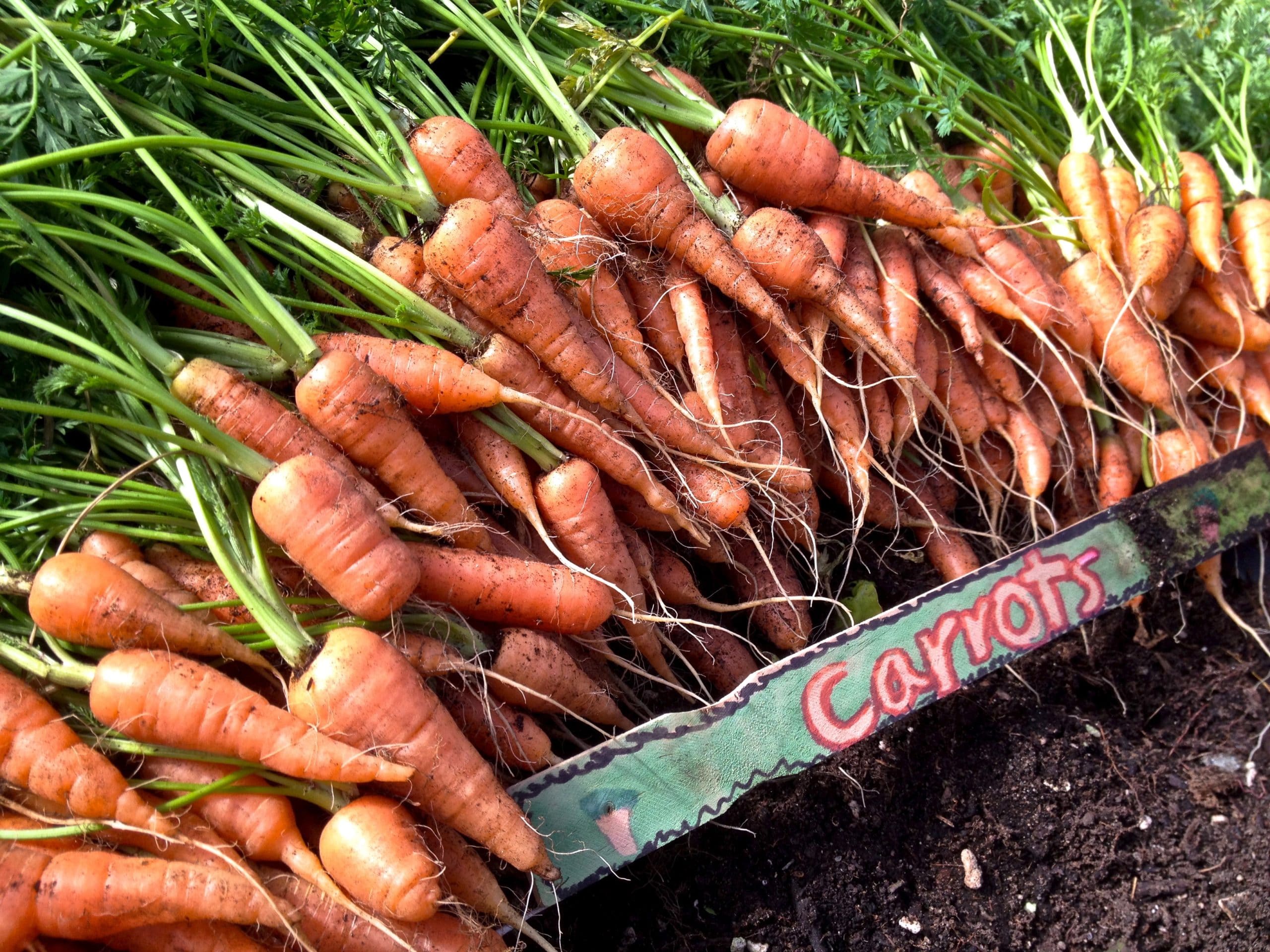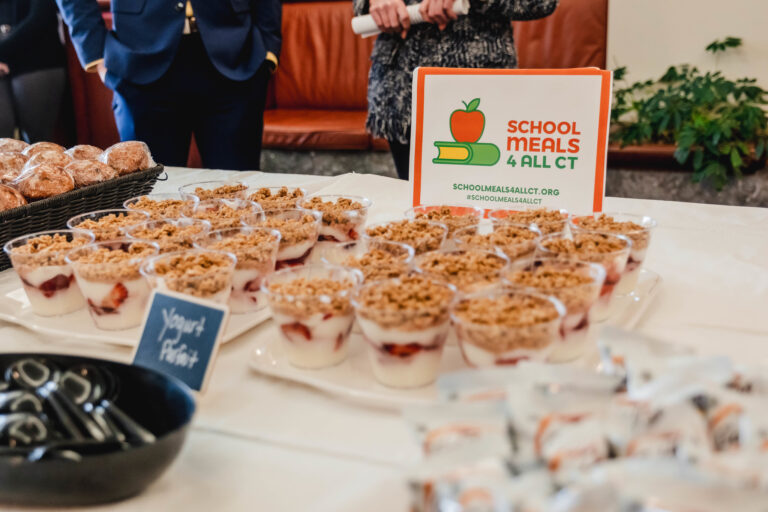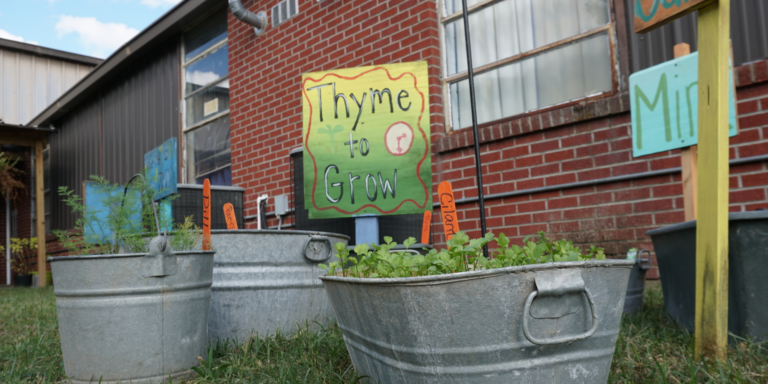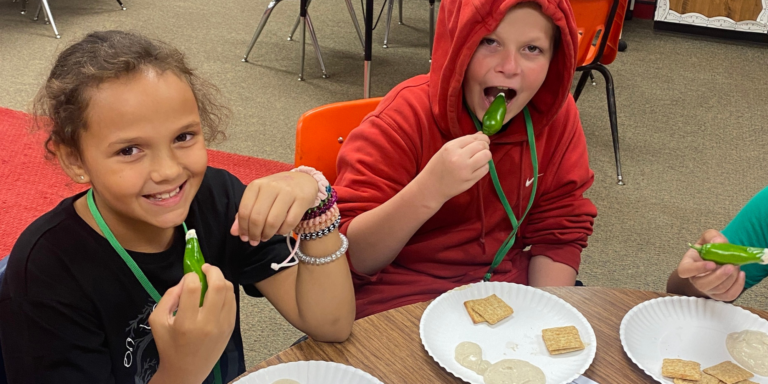What Does “Healthy” Mean? Our Vision for Healthy Food
Why FoodCorps honors a broad vision for healthy food.
Why FoodCorps honors a broad vision for healthy food.

It’s a new year, and millions of Americans are flipping calendar pages, making plans, and setting resolutions to “get healthy.” But what it means to get healthy depends on who you ask.
You’ve probably seen or heard messages about what healthy food is. Television and magazines are full of ideas — some of them broad, others narrow and restrictive — of what a healthy lifestyle is “supposed” to look like.
But what if you’ve never heard of the “superfoods” you see in commercials? What if you can’t find fresh produce near your home? What if the latest fad diet is way outside your price range, and for that matter, doesn’t sound remotely appealing?
At FoodCorps, we recognize that health can mean something a little different to everyone, including kids who eat many of their meals at school. We also realize that many well-meaning advocates for healthy kids can unintentionally send harmful messages about what “health” really means — and that in the past, we may have even done so ourselves.
That’s why, rather than try to define “healthy food,” FoodCorps works in service of a broad vision for what food in every school, and for every child, can be. Here’s why we’re renewing our commitment to our healthy food vision this year, and why it matters.
From our direct service program to our work with school nutrition leaders, we aspire to the following food vision:
“All students — regardless of race, place, or class — enjoy quality food in school, free from stigma and barriers to access. The food is delicious, appealing, seasonally and culturally relevant, and made from whole, nourishing ingredients. It is sourced and served in ways that support local economies, protect lands and waters, treat animals humanely, and uphold the dignity and health of farmers, food workers, and students themselves.”
What does working toward this vision look like in practice?
For FoodCorps service members, it means bringing students’ unique tastes, preferences, and backgrounds into the classroom and cafeteria, recognizing that students are more likely to eat foods that are familiar to them. That’s where initiatives like school taste tests come into play — one way of introducing kids to nutrient-rich, energizing foods that are available locally.
“Students are incredibly brave,” says Morgan McGhee, FoodCorps’ Director of School Nutrition Leadership. She’s also a registered dietitian with experience as a school menu planner and nutrition educator. “Kids will try new things when they’re introduced to them, consistently and with a positive attitude, when there are opportunities for them to do so.”
Laura Hatch, FoodCorps’ Senior Director of reWorking Lunch, has worked in school nutrition for a decade. She’s also a mom of two young boys, and says being a parent shapes how she thinks about healthy food.
“As I’m putting together a meal, I need to think of what, realistically, my kids will eat and enjoy. That’s what school nutrition professionals balance every day: ‘What is the healthiest meal within our budget that kids will eat and that will give them energy?’”
Anyone who’s spent time with young kids knows the particular stubbornness of a picky eater. That’s why it’s so important to build a menu of healthy food options that kids recognize and trust.
But this also means taking care not to attach stigma to food itself — particularly culturally relevant, community-specific foods that kids eat at home.
McGhee says that categorizing foods as “good” or “bad” is bound to end up hurting kids who are already vulnerable — particularly children of color, whose home-cooked meals may be disproportionately shunned by societal ideas about what’s “healthy.”
“You think, ‘The food I eat is bad, so that makes me bad.’ You start saying, ‘Something is wrong with me,’ and that’s a form of white supremacy,” she says.
“Students are fed ideas of health through a westernized lens that is predominantly tied to classism and racism,” says Zori Ray, a FoodCorps AmeriCorps service member in California. “Often times what are considered to be healthy foods are those that disregard or shame other cultures.”
When we talk about raising a generation of healthy kids, we don’t just mean physically healthy.
We know that hungry, undernourished children cannot learn. But neither can kids who struggle with low self-esteem, disordered eating, or the slew of other hardships that stem from a societal obsession with diet culture, weight loss, and other strict ideas about what it means to be “healthy.” Mental and emotional health are crucial to this conversation, too.
Between 40 and 60% of girls ages 6 through 12 are concerned about their weight, according to the National Eating Disorders Association. In one study, teenagers who dieted were five times more likely to develop an eating disorder. And weight stigma has been documented as a “significant risk factor” for depression.
It’s no secret that popular media is full of messages about “good” food and “bad” food, and unhelpful images of thin, white bodies heralded as “ideal.” Those messages have real repercussions — for people of all ages, genders, and backgrounds.
Working toward a healthy food vision, then, is an opportunity to inspire kids to develop a joyful relationship with food, especially in a society that can make food-positivity feel impossible.
“We are constantly comparing ourselves to those who we think of as — or that society has deemed to be — healthy,” says Ray. “This creates unrealistic, unsustainable, and unhealthy approaches to reaching a goal that we were not genetically meant to achieve.”
At FoodCorps, we’re also reckoning with how we might have played a role in perpetuating these hurtful ideals in the past, and how trying to define “healthy” for others can do more harm than good. After all, kids absorb the messages about food, body size, and diet culture that surround them. As role models and educators, FoodCorps service members can instill lifelong positive relationships with eating by championing joyful, non-judgmental experiences with food.
“We have been learning alongside our partners that we don’t need new definitions of ‘healthy,’” says Alexa Arnold, FoodCorps’ Deputy Director of Strategy and Partnerships. “Communities know what’s best for them and what’s best for their bodies, and new definitions of ‘healthy’ further confuse an overly crowded, rigid space.”
A broad vision for healthy food welcomes more kids and communities into a world where food is a source of nourishment and joy, not stigma and shame. But realistically, school nutrition professionals are working within strict guidelines and tight budgets. How can we all work toward making our vision for healthy food a reality?
“[It’s about] working with the community on how we can reframe the conversation around health to include foods that have cultural significance, as well as provide vital nutrients for our bodies,” says Ray.
Reframing the conversation can be as simple as checking how we talk about health. FoodCorps’ Laura Hatch says we can shift ideas about what “healthy” is away from determinants like body size and toward factors like feeling alert and energized.
“Food is more than just calories and nutrients; it has a feeling, it’s familiarity, it’s care,” she says. “Bringing all of that into the school environment is amazing.”
For well-meaning adults, that also means nixing certain phrases from our vocabulary, like the idea that we “earn” food after a tough workout, or that we’re “being bad” for eating dessert or skipping the gym.
It also means knowing where our food comes from, and recognizing the systems that shaped what foods we do and don’t have access to.
“For kids to have the opportunity to build a true positive relationship with food — that’s what we’re about. That’s what motivates me in my job every day,” says Arnold.
“Kids should understand that food is not just about calories, numbers, or stats on a label; their bodies intuitively know how much food they need without needing to memorize numerical values. Food comes with history and culture, and we have an opportunity in the school cafeteria to make mealtime a joyful experience.”
In the years to come, we look forward to continuing the conversation around what health can look like for kids (and adults!) everywhere. We hope you’ll join us in championing a new vision for our children’s health — one defined not by pounds or calories, but by authenticity, joy, and each kid’s potential to grow into the best self they can be.
This post originally appeared on Medium.

The Policy Brief, March/April 2024: WIC is Fully Funded

What Makes a Great School Garden?

5 Delicious Spring Recipes to Cook With Kids